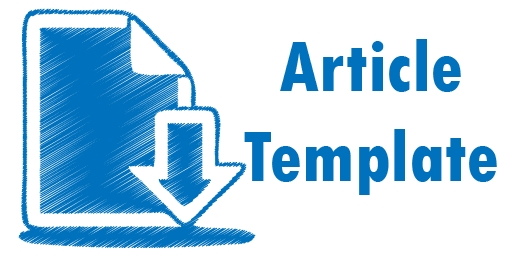Validity and Practicality of Flipped Classroom Based on Guided Inquiry on Reaction Rate Material
Abstract
Indonesia is entering the era of the industrial revolution 4.0 which is marked by advances in the field of technology. Teachers are required to have the ability to integrate technology into the learning process. In addition, the reaction rate material is classified as a material that is difficult to understand because the material is abstract. For that we need an appropriate learning system. Then a guided inquiry-based flipped classroom learning system was developed using Moodle on the reaction rate material. The type of research conducted is educational design research (EDR) with a plomp development model. Based on the research conducted, it was found that the level of content and media validity of the flipped classroom learning system based on guided inquiry was 0.89 and 0.93 with valid categories. While the level of practicality of teachers and students is 0.90% and 0.91% with a very practical category.References
Aiken, L. (1985). from the SAGE Social Science Collections . All Rights.
Bariah, S. H., An, K., & Imania, N. (2018). IMPLEMENTASI BLENDED LEARNING BERBASIS MOODLE PADA JURUSAN. 4(September).
Fitriyah, R. N. (2019). Pengembangan Kompetensi Guru di Era Revolusi Industri 4.0 melalui Pendidikan dan Pelatihan. 2019: Seminar Nasional Multi Disiplin Ilmu Dan Call for Papers, 1, 359–364. https://www.unisbank.ac.id/ojs/index.php/sendi_u/article/view/7302
Guswita, Z., & Mawardi, M. (2021). Validitas dan Praktikalitas Flipped Classroom Berbasis Inkuiri Terbimbing Pada Materi Larutan Asam Basa. Jurnal Pendidikan Tambusai, 5, 2992–2997. https://jptam.org/index.php/jptam/article/view/1331
Hanson, D. M. (2005). Designing Process-Oriented Guided-Inquiry Activities.
Idris, H. (2011). Pembelajaran Model Blended Learning. Jurnal Ilmiah Iqra’, 5(1), 61–73. https://doi.org/10.30984/jii.v5i1.562
Maulida, U. (2020). Konsep Blended Learning Berbasis Edmodo Di Era New Normal. Dirasah, 2, 121–136.
Nurhadiat, D., & Sakdiyah, H. (2019). Jurnal Ilmiah Wahana Pendidikan. 5(4). https://doi.org/10.5281/zenodo.3551974
Plomp, T, & Nieveen, N. (2013). Educational Design Research Educational Design Research. In Tjeerd Plomp & N. Nieveen (Eds.), Netherlands Institute for Curriculum Development: SLO. Netherlands Institute for Curriculum Development (SLO). http://www.eric.ed.gov/ERICWebPortal/recordDetail?accno=EJ815766
Syahri, W., Muhaimin, M., & Ardi, A. M. (2017). Pengembangan Multimedia Interaktif Berbasis Representasi Kimia Pada Materi Laju Reaksi Untuk Siswa Kelas Xi Sman 4 Kota Jambi. Journal of The Indonesian Society of Integrated Chemistry, 9(1), 26–34. https://doi.org/10.22437/jisic.v9i1.5081
Tune, J. D., Sturek, M., Basile, D. P., Jensen, J. L., Kummer, T. A., & Godoy, P. D. D. M. (2015). Improvements from a Flipped Classroom May Simply Be the Fruits of Active Learning How We Teach Flipped classroom model improves graduate student performance in cardiovascular, respiratory, and renal physiology. CBE Life Sciences Education, 14(Spring), 1–12. https://doi.org/10.1187/10.1187/cbe.14-08-0129
Ubaidillah, M. (2019). Penerapan Flipped Classroom Berbasis Teknologi Informasi pada Mata Pelajaran Fiqih di MTs Al-Chusnaniyah Surabaya. Islamika : Jurnal Ilmu-Ilmu Keislaman, 19(01), 34–45. https://doi.org/10.32939/islamika.v19i01.375
Watson, J., Powell, A., Staley, P., Patrick, S., Horn, M., Fetzer, L., Hibbard, L., Oglesby, J., Verma, S., Education, M., C, T. O. C.-I. N. B., Kuehn, B. L., Ed, D., Archibald, D., Barbour, M. K., Leary, H., Wilson, E. V., & Ostashewski, N. (2015). blending Learning: The Evolution of Online and Face-to-Face Education from 2008–2015. INACOL, The International Association for K–12 Online Learning, July, 1–20. http://files.eric.ed.gov/fulltext/ED560788.pdf
Yunus, Y., & Sardiwan, M. (2019). Jurnal Pendidikan Teknologi Informasi. Jurnal Pendidikan Teknologi Informasi, 6(1), 80–86. https://doi.org/10.29165/pti.v5i2.132
Zubaidah, S. (2016). Keterampilan Abad Ke-21: Keterampilan Yang Diajarkan Melalui Pembelajaran. Seminar Nasional Pendidikan, 2(2), 1–17.
Copyright toward articles published by Entalpi Pendidikan Kimia is hold by Entalpi Pendidikan Kimia. In the other side, Entalpi Pendidikan Kimia also applied CC Attribution 4.0 which means you could 1) share — copy and redistribute the material in any medium or format; and 2) adapt — remix, transform, and build upon the material; for any purpose, even commercially. As long as you give us attribution — You must give appropriate credit, provide a link to the license, and indicate if changes were made. You may do so in any reasonable manner, but not in any way that suggests the licensor endorses you or your use. Entalpi Pendidikan Kimia also applied Open Access toward each published articles, so the published content will be available freely for public.





